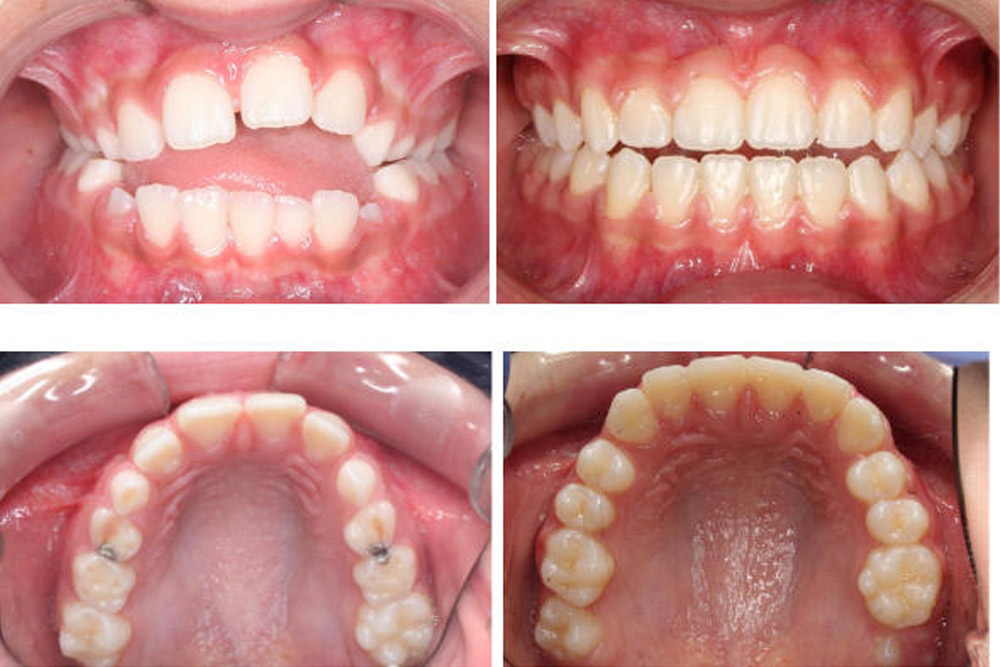
What is Early Treatment?
One of the most common questions that parents ask me is, “Why are we starting treatment when my child still has baby teeth? When I was younger my parents waited until all of my permanent teeth were in.” Like most areas of medicine, orthodontics has continued to evolve in ways that ultimately benefit the patient’s long-term health. Early treatment is one of the best examples of this!
Early treatment is imperative in certain cases. The following are factors that I always look for when determining whether early intervention is warranted:
- Does the child have a thumb sucking habit?
- Is the child a mouth breather?
- Does the child have a tongue thrust?
- Is there anterior and posterior crossbite?
- Does severe crowding exist?
- Can we intervene to change the child’s growth pattern?
The photos above are an excellent example of the impact of early treatment. In this scenario, the patient had a finger habit which was causing the front teeth to be at two different levels. The finger habit caused a narrowing of the upper jaw creating a posterior and anterior crossbite. This narrowing of the upper jaw decreased the amount of space she had for her tongue to rest. The finger habit, narrow upper jaw, and mouth breathing, forces the tongue to rest at the bottom of the mouth. When the tongue rests at the bottom of the mouth, it stimulates growth of the lower jaw while simultaneously decreasing stimulation and growth of the upper jaw. The space or opening in the bite has been created by the finger habit. This leads to a space which allows the tongue to thrust forward. The tongue thrust then contributes to the inability of the front teeth to make contact. Together, all of these things greatly impact the growth and development of the jaws as well as how the child breathes. The altered growth of the jaws causes both aesthetic and functional issues. The impact to the child’s breathing creates a health issue and mouth breathing itself impacts skeletal growth. As an orthodontist who practices early intervention, I know that children have the best outcomes when we can correct these issues when the child is still in a phase of rapid growth. I have the most opportune conditions at these times where we can maximize the long term benefit to the child. It is much easier to influence the more malleable bone in children rather than allowing unfavorable growth to continue and trying to correct when bones are harder and more “set.”
